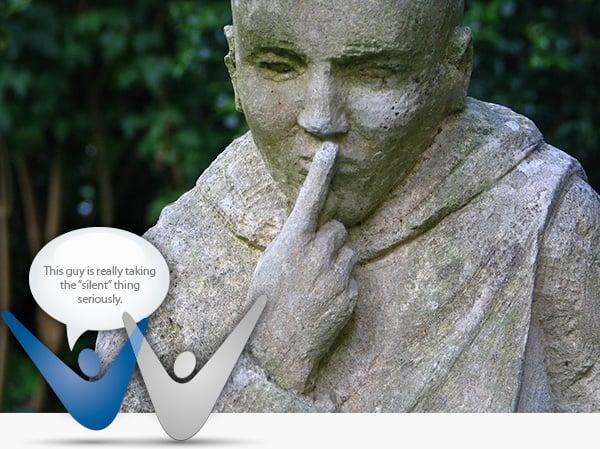
You’ve decided to host a benefit auction at your next big Nonprofit fundraising event — that’s great! You’ve taken an important step toward successful fundraising. Now you are faced with a few important decisions while planning the event, which can be overwhelming.
One of the first things you’ll have to decide is whether to have a live or silent benefit auction. How do you know which is better for your organization’s big night?
Well, before we get ahead of ourselves, first let’s talk about the differences between the two types of auctions.
1. Engagement level
Live auctions require an auctioneer who will engage attendees and encourage guests to call out bids. Silent auctions, on the other hand, are more passive; attendees write their bids on pieces of paper or do the bidding electronically.
During the action, attendees continually check to see if they’ve been outbid. If so, they can write down a higher number or choose to bow out.
{{cta(‘ace6904c-d5a9-4f23-afcc-36e09cf0f71e’,’justifycenter’)}}
2. Rate of return
In most cases, a live auction is going to yield a higher return on your items than a silent one – simply because you have a persuasive individual encouraging more bids from your attendees.
Silent auctions, while still effective, tend to generate less per item because guests get distracted by the activity of the event and forget to check back on their bids.
3. Emotional appeal
During a live auction, attendees are going head-to-head in a bidding war. They often get so caught up in the excitement that they call out higher bids without a second thought. Take advantage of the commotion!
When rationality goes out the window, who knows how much money you could raise?
4. Number of items
Silent auctions are good alternative if you have a ton of items to auction off. You can also incorporate a live component to sell sell some of the flashier and more expensive items.
In a live auction, a good auctioneer will almost always generate higher bids, which means more money raised per item – and more money raised altogether.
{{cta(‘212f770f-b01c-440a-8592-b2fad17e7586′,’justifycenter’)}}
5. Effort to organize
Some Nonprofits prefer to plan silent auctions because they think it is less expensive and involves less work, but that’s simply not the case. Oftentimes, silent auctions require even more work setting up, managing bid sheets and tracking down winners.
Consider a combination
If you decide to host a silent auction, maybe because you’re using the auction as a complement to your main event, there are some ways that you can work to make it more effective.
If you’re hosting a silent auction with a live auction, leave the big-ticket items for the live auction and place the items of less value on the bidding tables. Make sure to set up the tables so that attendees can easily go back and forth throughout the night, and remind the audience to check on their bids periodically. If you allow time for breaks during a dance or a golf tournament, guests can also use that time to head over to the bidding table.
{{cta(‘6a97920e-d7b4-4e7b-bc7d-0dac344d64dc’,’justifycenter’)}}
Before you plan your next event, think about the outcome you’re hoping to achieve. If you’re trying to raise as much money as possible—which is the goal of most Nonprofits hosting a fundraising event—consider doing a combination of both a live and silent auction to get the results you want.


